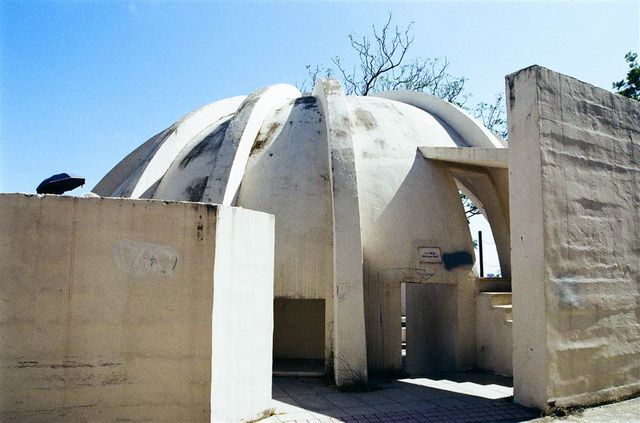Popular Trip Moments
New Digital Exhibition at the Art Museum | Promise me! You must go here when the weather is good! | Concert transfers between Hong Kong and Shenzhen, Guangzhou, Zhuhai, Dongguan, Zhongshan, Huizhou | Tsuen Wan Korean Restaurant: Delicious and Affordable | ✿ A must-try for Dirty coffee lovers! ✿ | A cost-effective seafood feast in Kwai Chung | "The Hong Kong Code in the Wrinkles of Time — Seven Soulful Encounters with Hong Kong" | 🏯 Top places for great photos in China | Disney Fun Awaits🎡 | Sai Kung Hotel Offers a New Check-in Experience | Korean restaurant Young Dabang lands in Sha Tin | 🍫☕ Review of a cute chocolate dessert cafe in a hotel! | Disney Explorers Lodge: An Adventure Hotel in Disney | Ocean View Sweets🍓 | Hong Kong Christmas Retro Photo Spot Guide | Royal Caribbean Spectrum of the Seas|Essential Packing List | Brand New 75-Minute Set Lunch | Ocean Spectrum 4-Day 3-Night: A Fun and Fulfilling Cruise Vacation | Lantau Day Trip | Mong Kok Korean BBQ Recommendation | ✨️ High-quality coffee shop in Sai Wan "No Seeds is Coffee" ☕ Sit comfortably and quietly 😁 Enjoy coffee and afternoon tea 💯 | Buy 1 get 3 free on "Gu Lang Yu" + free upgrade to sea view room! 🔥2026 Early Bird Sale is here | The new Loewe exhibition in Hong Kong is here! A healing color storm is coming | 🚨Offer countdown 1 day! Follow the Ocean Spectrum on your journey to Vietnam 🇻🇳 | All-you-can-eat Daza crab | Grand Western Restaurant | Cost-effective skewer restaurant
Recommended Attractions at Popular Destinations
Popular Attractions in Paris | Popular Attractions in Chefchaouene | Popular Attractions in Melbourne | Popular Attractions in Bali | Popular Attractions in Bangkok | Popular Attractions in London | Popular Attractions in Los Angeles | Popular Attractions in Shanghai | Popular Attractions in Beijing | Popular Attractions in Barcelona | Popular Attractions in Las Vegas | Popular Attractions in Osaka | Popular Attractions in Tokyo | Popular Attractions in Walt Disney World Resort | Popular Attractions in Rome | Popular Attractions in Kuala Lumpur | Popular Attractions in Dubai | Popular Attractions in Singapore | Popular Attractions in Kyoto | Popular Attractions in Iguazu National Park(Argentina) | Popular Attractions in Phuket | Popular Attractions in Zanzibar Island | Popular Attractions in Sydney | Popular Attractions in West Lake | Popular Attractions in New York | Popular Attractions in Florence | Popular Attractions in Chengdu | Popular Attractions in Madrid | Popular Attractions in Jungfrau Region | Popular Attractions in Istanbul
Popular Attractions
Pavilion of High Mountain and Flowing Water | Red Gate Palace | House of the Xue Family | Cuihua Mountain·Qinling Zhongnanshan Unesco Global Geopark | Wolong Bridge | Wangxian Bridge | Huaqing Palace | Emperor Qinshihuang's Mausoleum Site Museum | Huajue Lane, the Great Mosque | Shaanxi History Museum | Qinglong Temple | West Park | Puji Temple | Putuoshan Duobao Tower | Yang Guan | Yangshan Stone Buddha | Cangshan Mountain | Butterfly Spring Scenic Area | Sik Sik Yuen Wong Tai Sin Temple | Shixin Peak | Colonial Theatre Laconia | Fort Beauregard Veteran's Memorial Park | Hanuman mandir | Iskra | Eyre Reserve | Hanuman Mandir | Boothferry Golf Club | Silver Sage Golf Course | Golf364
Popular Restaurants in Hong Kong
MING COURT | Lamma Rainbow Seafood Restaurant | Lai Ching Heen | Tin Lung Heen | Tosca di Angelo | Aqua | Yung Kee Restaurant | Luk Yu Tea House | Spring Moon | SUN TUNG LOK CHINESE CUISINE | Kau Kee Restaurant | 8½ Otto e Mezzo BOMBANA | T’ANG COURT | Tsui Hang Village Tsimshatsui | SUN HANG YUEN | Chee Kei | One Harbour Road | Tak Fat Beef Ball | Sky726 | Hu tong | Shang Palace | LUNG KING HEEN | TASTY CONGEE & NOODLE WANTUN SHOP (IFC Branch) | Paper Moon | The Verandah | The Chairman | Ah Yat Harbour View Restaurant | Hing Kee Restaurant | Yat Tung Heen | Loaf On Cuisine
Popular Ranked Lists
Top 10 Luxury Hotels near Tomigusuku | Popular Premium Hotels in Altea | Popular Best Things to Do in Wuyi | Popular Best Things to Do in Jingzhou | Top 10 Luxury Hotels near Docklands | Popular Premium Hotels in Suffolk Park | Top 50 Must-Visit Restaurants in Fukuoka | Popular Premium Hotels in Shah Alam | Popular Best Things to Do in Lanxi | Top 10 Best Things to Do in Adelaide | Popular Premium Hotels in Paihia | Top 50 Must-Visit Restaurants in Nanjing | Top 50 Must-Visit Restaurants in Sydney | Top 50 Must-Visit Restaurants in Washington D.C. | Popular Premium Hotels in Leeds | Top 50 Must-Visit Restaurants in Kunming | Top 20 Luxury Hotels near Binh Son | Top 50 Must-Visit Restaurants in Nha Trang | Top 50 Must-Visit Restaurants in New York | Top 50 Luxury Hotels near Mito | Popular Premium Hotels in New Hampshire | Top 50 Must-Visit Restaurants in San Francisco | Top 50 Must-Visit Restaurants in Koh Samui | Popular Premium Hotels in Shirdi | Popular Best Things to Do in Cebu | Popular Premium Hotels in Chattanooga | Popular Premium Hotels in Mito | Popular Premium Hotels in Nakhon Pathom Province | Top 10 Best Things to Do in Minsk | Popular Premium Hotels in Exeter
About
Payment methods
Our partners
Copyright © 2025 Trip.com Travel Singapore Pte. Ltd. All rights reserved
Site Operator: Trip.com Travel Singapore Pte. Ltd.
Site Operator: Trip.com Travel Singapore Pte. Ltd.




















